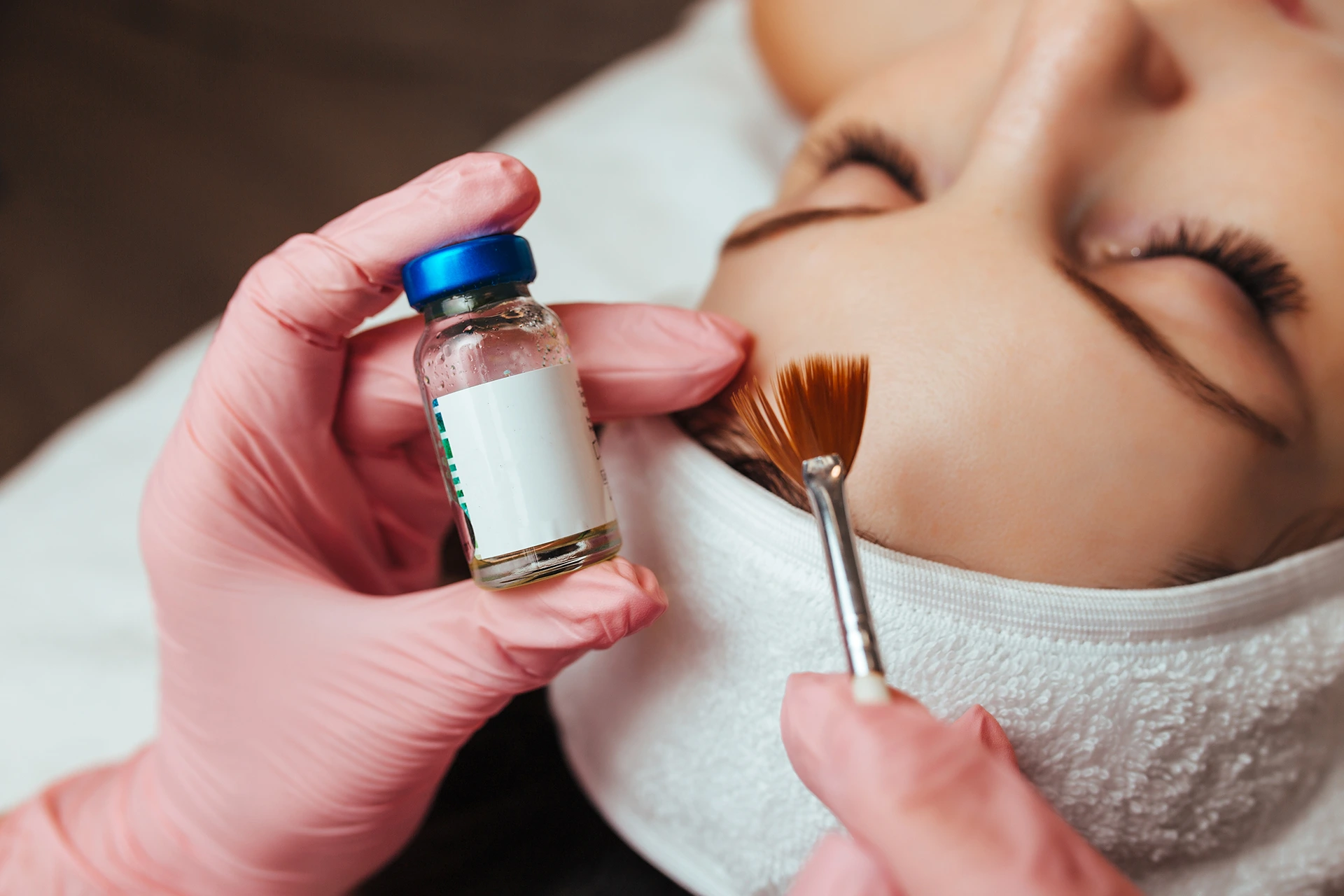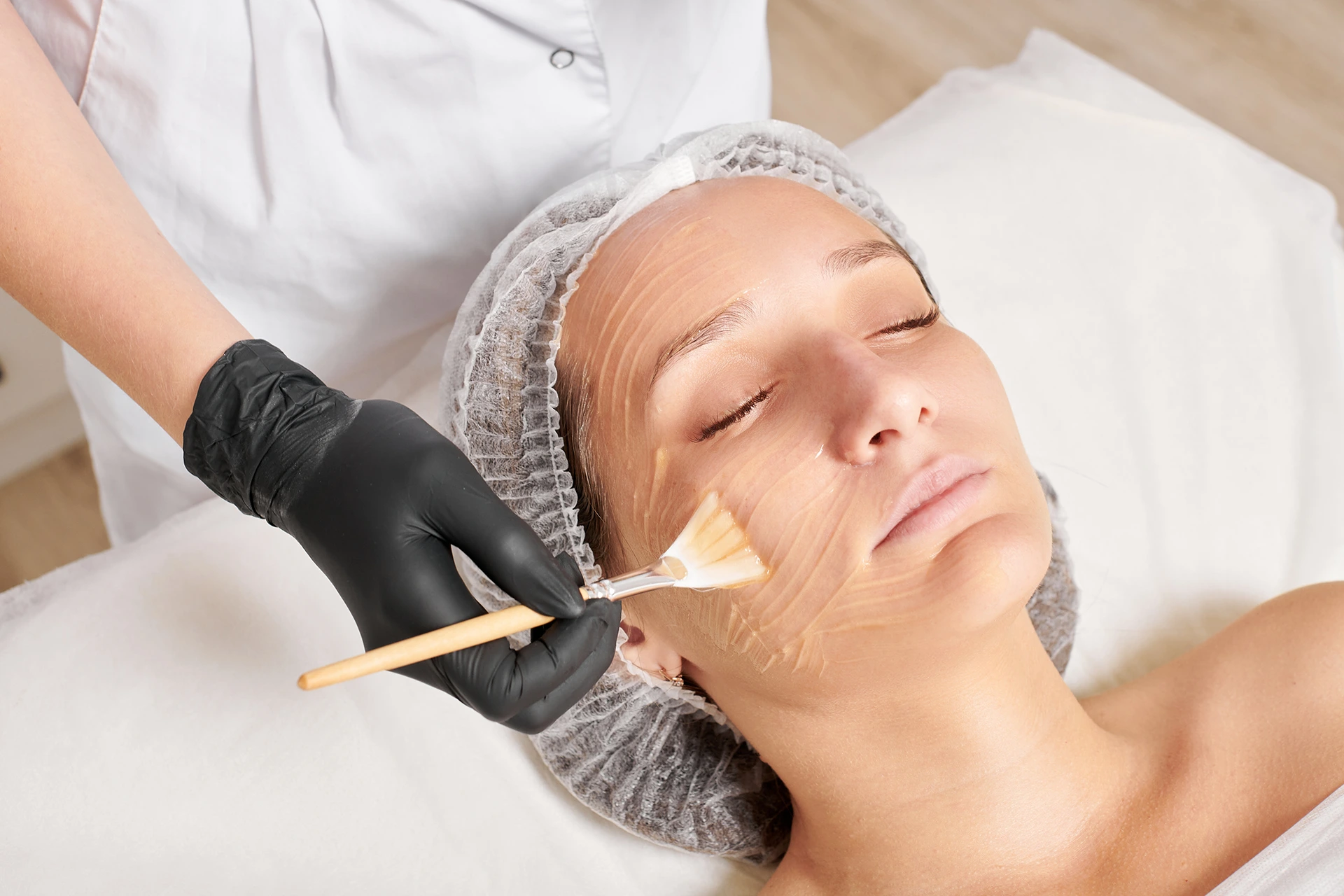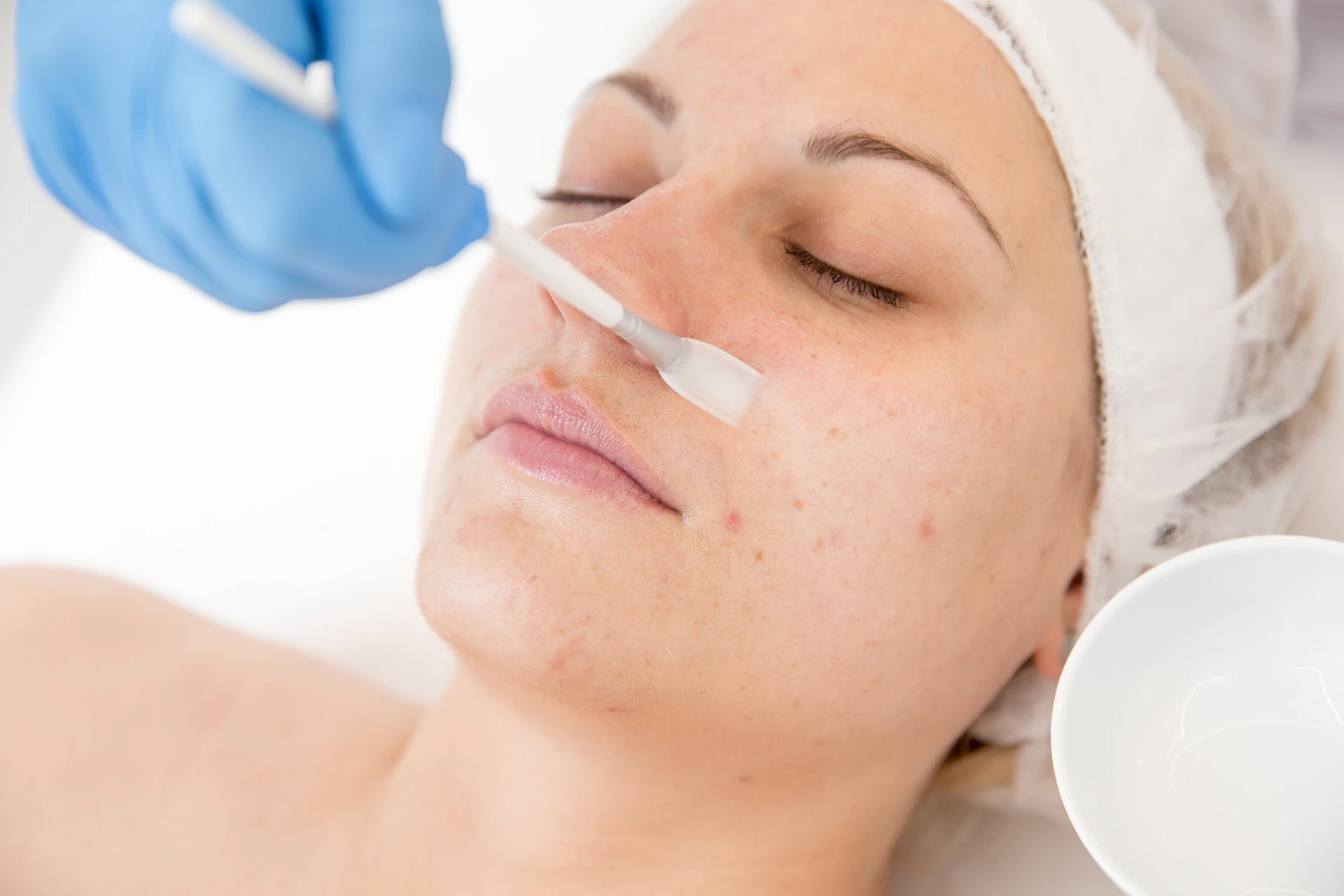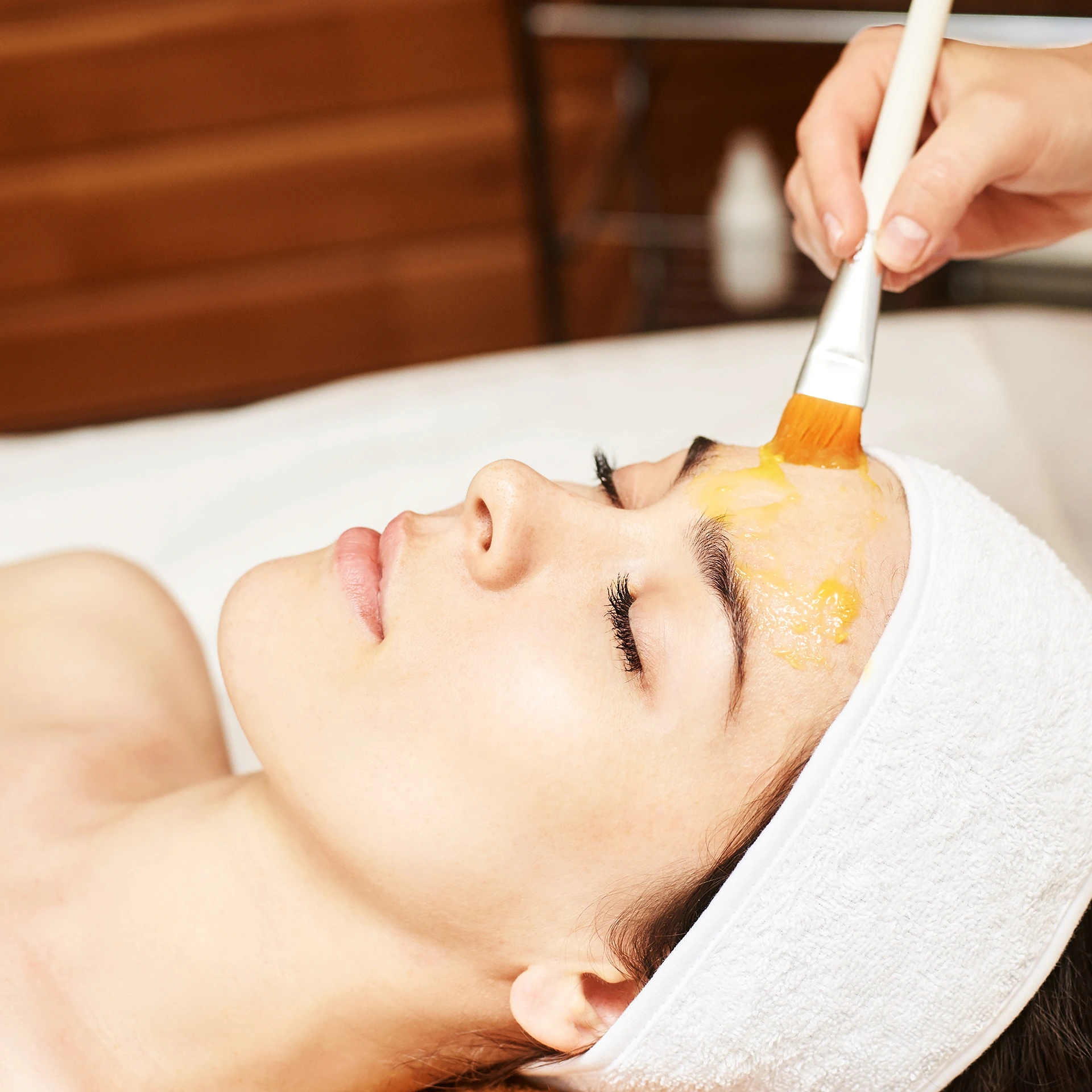Did you know that the global anti-aging market is projected to reach a staggering $47.8 billion by 2027? The quest for smoother, younger-looking skin is a journey many of us embark on as we age.
Chemical peels offer a proven way to wipe away dull, damaged top layers of the skin and stimulate fresher, younger-looking skin underneath.
In today’s world of non-invasive cosmetic procedures, this particular treatment can deliver stunning results for improving fine lines and wrinkles and recapturing a youthful complexion. Here’s an in-depth look at how chemical peels can minimize wrinkles by stripping away aged layers and revealing the glowing skin underneath.
A Brief History of Chemical Peels
Chemical peels have been used to treat skin conditions for over 100 years. Phenol peels were first utilized by dermatologists in the early 20th century to treat skin damage and scarring from procedures like dermabrasion. Glycolic acid peels emerged as a less intense alternative in the 1970s.
The popularity of these peels surged in the 1990s. By 2000, over 1 million chemical peel procedures were performed annually in the United States alone. This growth was fueled by their versatility in treating skin concerns like wrinkles, acne scarring, sun spots, and signs of aging.
Today, there are numerous types of peels available, ranging from light peels using alpha hydroxy acids (AHAs) like glycolic acid from fruit acids, to deeper peels using trichloroacetic acid (TCA) or phenol at medical-grade strengths. This allows dermatologists to customize treatment plans targeting each patient’s specific skin goals.
While laser skin resurfacing and plastic surgery techniques have grabbed headlines, chemical peels remain a proven, effective way to rejuvenate the skin and provide anti-aging benefits with minimal downtime.
What Exactly Are Chemical Peels and How Do They Work?
Chemical peels involve applying a chemical solution to the skin, causing it to exfoliate and peel off, revealing new skin underneath. The solution contains various types of acids that work by dissolving the bonds between dead skin cells on the outermost layer of skin. This allows the dead cells to slough off, bringing fresher skin to the surface.
There are three levels of peels based on how deeply they penetrate the skin:
- Light peels – Use alpha hydroxy acids (AHAs) like glycolic acid from sugar cane or lactic acid from milk. They penetrate just the outer layer of skin, known as the epidermis, and are ideal for treating fine lines, discoloration, dullness, and uneven texture.
- Medium peels – Contain trichloroacetic acid (TCA) and penetrate down into the dermis, or middle layer of skin. They are effective at reducing wrinkles, age spots, acne scars, and other damage in the upper part of the dermis.
- Deep peels – Use higher concentrations of TCA or phenol to reach deep into the dermis to stimulate collagen growth. They dramatically improve severe wrinkles, scars, and sun damage. However, they require sedation and have more extended recovery time.
For wrinkle reduction, light to medium-depth ones are typically used. The acid solution applied triggers skin inflammation and peeling. As the damaged outer layers are removed, healthier skin with an improved tone and texture emerges. New collagen production is also stimulated, helping soften facial lines.
Potential Side Effects of TCA Peels
When considering TCA chemical peels, it’s important to be aware of the potential side effects, particularly when using higher concentrations:
- Temporary darkening or lightening of skin color, especially in individuals with darker skin tones.
- Persistent skin discoloration.
- Activation of cold sores in people prone to them.
- Rare risk of scarring and infection if the procedure is done improperly.
- Redness, irritation, swelling, and peeling during the healing process.
What Skin Concerns Can Chemical Peels Improve?

Chemical peels are a superstar when it comes to erasing wrinkles and other signs of skin aging on the face, neck, chest, and hands. They can also treat acne scarring, skin discoloration, and rough texture. The results for wrinkles and photoaging include:
- Softening of fine lines and shallow creases
- Reducing crow’s feet, forehead furrows, and other expression lines
- Improvement in skin laxity and less sagging appearance
- Fading of age spots and uneven pigmentation
- Smoothing of minor acne scarring and enlarged pores
- Overall brighter, fresher, less wrinkled complexion
However, chemical peels have limitations in treating severe skin aging concerns. For one, they cannot remove established deep folds or severely drooping skin.
While more dramatic results are possible with deeper peels, this comes with a higher risk of complications. In general, the peels are better suited for reducing fine lines and surface wrinkles rather than significant skin sagging or scarring.
Chemical peels provide a medium-depth treatment that cannot match the tightening and lifting capabilities of procedures like a facelift. Even so, they offer substantial improvement beyond what gentle exfoliating treatments can achieve.
When used appropriately for mild to moderate wrinkles, skin discoloration, and texture concerns, these peels can reveal remarkably improved tone and brightness.
What’s the Evidence That Chemical Peels Actually Work for Wrinkles?
Controlled studies provide the highest level of proof that a skincare treatment is effective. By comparing results to untreated areas or placebo treatments, researchers can isolate the true effects of chemical peels.
Multiple studies have investigated popular types of chemical peels for reducing wrinkles and skin aging. The findings provide convincing data that certain types of these peels do lead to measurable anti-aging effects when properly performed.
Two kinds stand out in particular:
Glycolic Acid Peels
One study used imaging to quantify facial wrinkle improvement from glycolic acid (GA) peels. Reduction in total wrinkle length better reflected clinical changes than wrinkle count. GA peels effectively reduced wrinkle length in patients aged 30s-60s, with the best results evident in patients in their 50s.
No concentration difference was seen between 35-70% GA when based on erythema reaction. The analysis demonstrated GA peels can significantly improve facial wrinkles, with limitations in very young and old patients.
Trichloroacetic Acid (TCA) Peels
A prospective cohort study examined the efficacy of TCA peels for treating facial wrinkles in patients. Clinical evaluation by dermatologists found significant improvement in wrinkles after the peels.
Additionally, another study compared two chemical peel regimens for treating photoaged skin – 15% TCA with 70% glycolic acid versus 35% TCA peels alone. Patients received 5 treatments over 14 weeks.
Both regimens improved elasticity, hydration, and pigmentation. The combination peels enhanced hydration more, while the 35% TCA peels showed greater wrinkle and pigment improvement.
While individual results vary, medical studies confirm these peels’ ability to deliver measurable anti-aging effects. People with milder forms of photoaging tend to see faster results compared to severe damage. But even deeper wrinkles and scars can be remarkably reduced over time with a customized peel regimen.
What Are the Potential Side Effects and Risks?
While chemical peels are safe when performed correctly by a board-certified dermatologist, some possible side effects include:
- Redness, irritation, swelling, and minor peeling of the skin for several days after the procedure
- Increased sensitivity to sun exposure requiring diligent daily broad-spectrum sunscreen use with SPF 30 or higher during recovery and for several months afterward
- For medium or deeper peels, more extensive peeling, crusting, and flaking of the skin as it sheds damaged layers
- Patients with darker skin types are at higher risk of post-inflammatory hypo- or hyperpigmentation changes. Chemical peels should be done carefully in these patients and avoided if there is active tanning or recent sun exposure
- Cold sores may flare up in those prone to them due to skin irritation
- Some pain or stinging during the actual peel application
- Patients should avoid any other resurfacing procedures for 2-4 weeks before and after a chemical peel.
- Patients with a history of herpes simplex virus should be pretreated with antiviral medication prior to a chemical peel.
The depth of the peel should be selected carefully based on the patient’s skin type, degree of photodamage, and treatment goals. Superficial peels are safer for darker skin types.
Those with very sensitive skin, certain medical conditions, or taking medications increasing sun sensitivity may not be good candidates. Discussing any health concerns and past reactions thoroughly with your dermatologist beforehand minimizes risks.
What Can I Expect During the Procedure and Recovery?
Peel treatments are typically performed in a dermatologist’s office. The process consists of:
- Cleansing the skin and applying a chemical prep solution to remove any residue
- Application of the chemical peel solution, tailored to your skin goals. The concentration is adjusted for light, medium, or deep penetration.
- For light peels, the acid is neutralized and washed off after 1-2 minutes. Most superficial peels do not require neutralization. Medium peels require 3-15 minutes for penetration and then neutralizing.
- Patients feel a stinging or burning sensation temporarily during application. Deeper peels lead to more intense stinging/burning.
- The skin may be red or brownish initially, becoming dry and flaky as the old skin peels away.
- Once the peeling phase is complete, the regenerated smoother skin is revealed.
- The use of moisturizer and avoidance of direct sun is critical during recovery.
- The treated skin peels and sheds over the next 3-14 days depending on the acid used.
| Peel Depth | Timeframe for Peeling |
| Light Peel | ~3-7 days |
| Medium Peel | ~5-10 days |
| Deep Peel | 10-14 days |
Most patients resume regular activities after 2-5 days for light peels, or as soon as 10-14 days for deeper treatments. Some dermatologists recommend a follow-up light peel 1-2 weeks later to boost results.
Ongoing peel maintenance at 4-6 week intervals sustains the anti-wrinkle improvements for superficial peels.
Tips and Considerations for Optimal Results
- Realistic expectations are important, as chemical peels improve but don’t eliminate all signs of facial aging.
- Adjunctive treatments like microdermabrasion, microneedling, or laser can be combined with chemical peels for enhanced skin rejuvenation. For example, combining chemical peels with lasers can further improve outcomes.
- Patients should avoid any irritants like retinoids, benzoyl peroxide, or harsh scrubs for several days before and after to minimize discomfort.
- Diligent sunscreen use of at least SPF 30 up to 50 is critical to protect freshly peeled skin and maintain results.
- Smoking negatively impacts peel effectiveness and should be avoided for 2 weeks before and after the procedure. A healthy lifestyle also aids the renewal process.
- Multiple lighter peels are usually preferable to one deep peel for treating wrinkles, allowing for gradual improvement with less downtime.
Realistic Expectations
- Chemical peels improve skin texture, tone, and fine lines but do not tighten sagging skin or eliminate deep wrinkles.
- Multiple treatments are usually needed for the best results.
- Improvement is gradual over weeks to months rather than immediate.
- Daily sun protection is vital to maintain results.
Appropriate Peel Selection
- Superficial peels with gentler acids like mandelic or lactic acid are best for sensitive, dry, or ethnic skin.
- Those with oilier skin often tolerate stronger peels with glycolic, salicylic, or TCA better.
- A series of light peels may provide similar results as one deeper peel with less risk.
Don’t Be Shy, Give Peels a Try!

While most anti-aging seekers get hung up on lasers and injectable wrinkle fillers, chemical peels offer a proven way to freshen skin and turn back the clock. By removing outer layers of damaged and aged skin, they allow for the emergence of new youthful, radiant skin underneath.
Chemical peels stimulate collagen, improve tone and texture, and soften away fine lines and creases with little to no recovery downtime.
If you’re considering chemical peels to address signs of aging, consult with a licensed dermatology provider to determine if they are right for your skin type and concerns. Discuss a customized chemical peel treatment plan today at CosMedic LaserMD.
With locations across Michigan, our experienced dermatology experts will assess your skin and create a tailored regimen for optimal rejuvenation using superficial, medium, or deep chemical peels. It’s time to give your wrinkles the peel treatment and restore your skin’s youthful glow.







